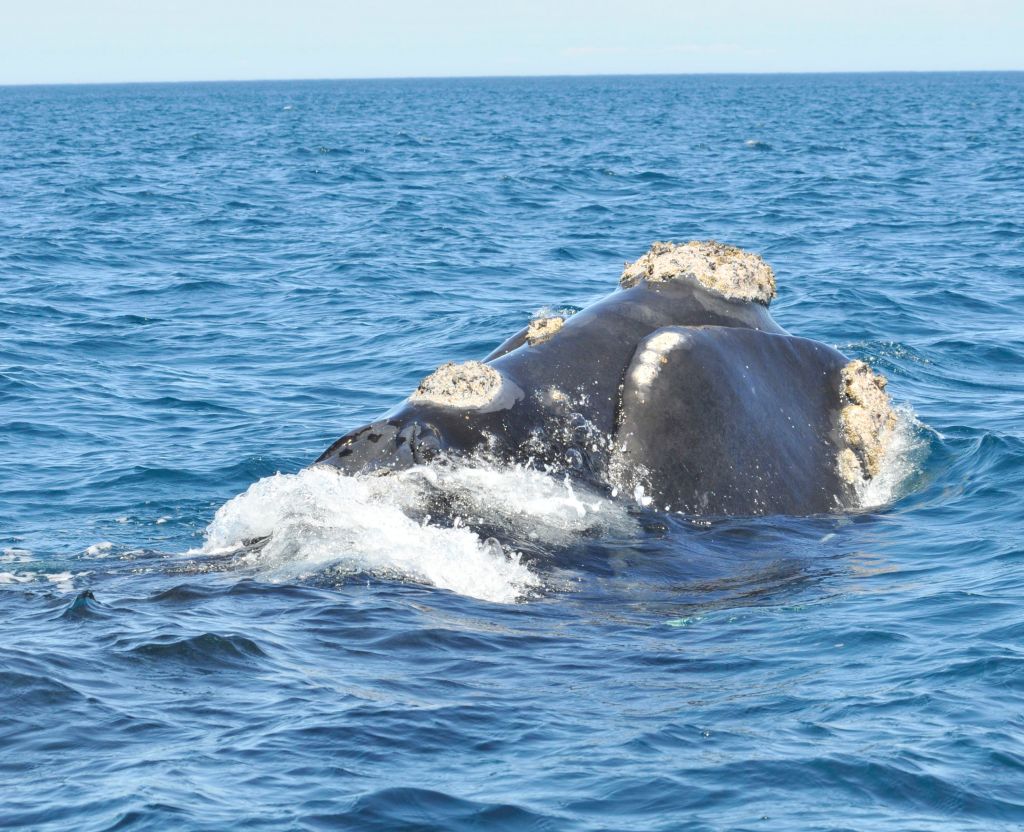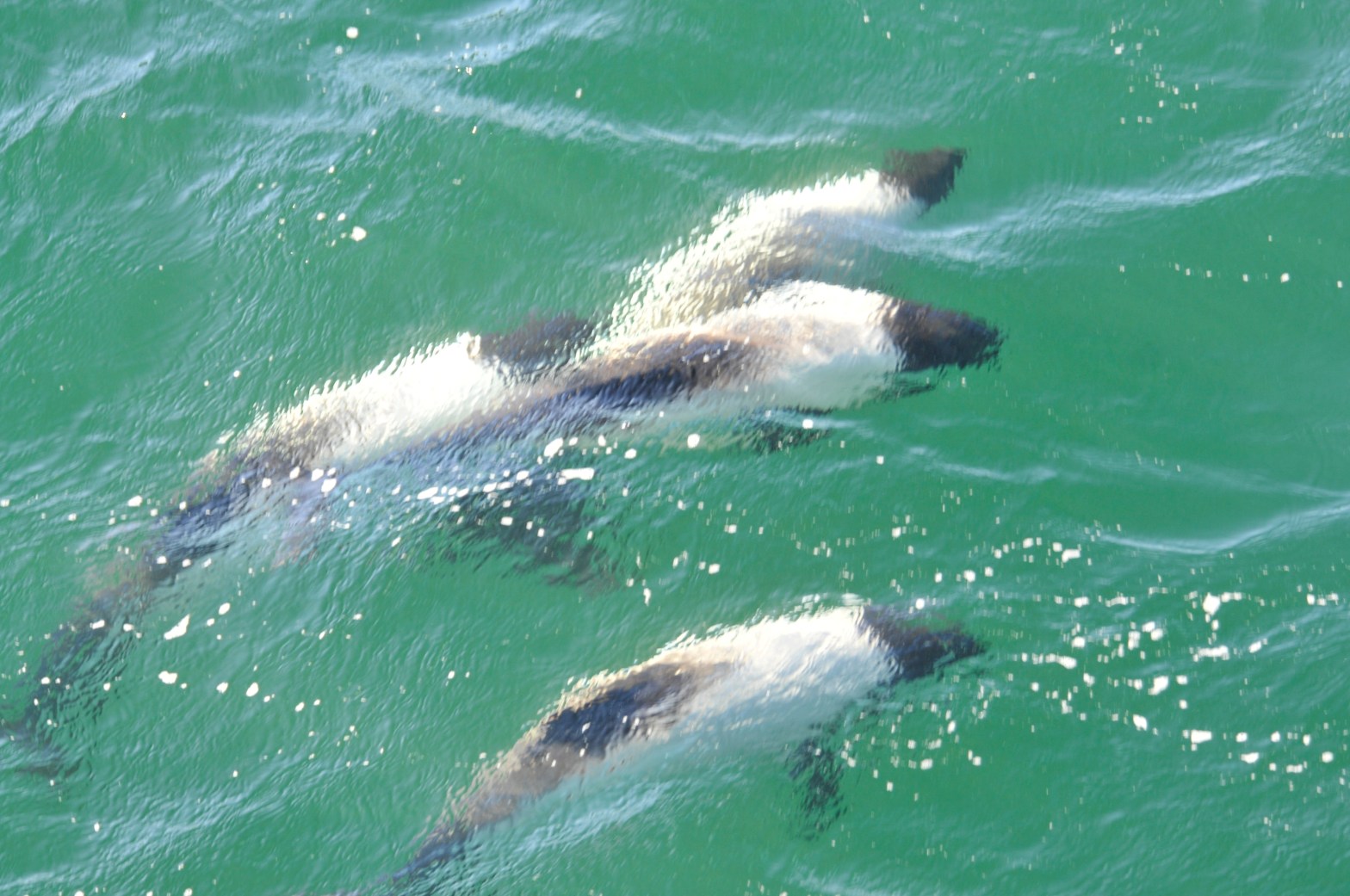
The islands have fewer than 4,000 residents and nearly half of them live in the city.
The sea-faring heritage of the region is shown in the arch of Blue Whale jaw bones just outside the cathedral. It was whaling, sealing, and penguins that first drew economy to this distant (from Europe) part of the world. The waters here, and on to, and then around, Antarctica were teeming with penguins, seals, and whales. Explorers trying to circumnavigate the planet by sea in the 14th, 15th, and 16th centuries noticed this great abundance of animal life and soon there were expeditions designed to turn all of those creatures into lamp oil.
Whales were harvested and rendered down into wooden casks brimming with whale oil. Penguins were herded up planks where, at the end, they fell into giant cauldrons soon filled with their own oils. Seals suffered similar fates.
It was a bloody difficult life for the sailors and a bloody end for millions of creatures.
Here is a little bit on a couple of the local marine mammal populations……

All the seals are true seals and not sea lions; those with ears and dexterity.
The baleen Cetaceans are well represented with Blue Whales, Humpbacks, Southern Right, Sei, Minke, Fin and several others..
Toothed whales are also widespread in the area; Sperm and Southern Bottlenosed Whales with a range of dolphins including Orca and some of the beaked whales are found throughout the region. Many of these whales are very poorly known and understood as they are only seen when they wash ashore after dying.
A few beaked whales can be spotted in waters all over the world but they are always a surprise and unplanned for.

Southern Right Whales are surface feeding eaters of krill and other floating stuff. They swim along with the mouth half open taking in water through the mouth and allowing the water to exit through a net of baleen. As the water leaves toward the rear of the mouth the krill is caught inside by the porous wall of baleen that hangs inside the mouth like a large rigid (internal) mustache. This is how the Sei Whale also feeds.




Krill are the keystone creature of the oceans. They are essential. Warming waters and harvesting for human use are having a negative impact on krill populations.

I have chosen just a couple of the marine mammals of the Southern Ocean to show and tell; perhaps ones most easily seen near the Falklands or the Argentinean coast. But remember that the Southern Oceans pass under, not only South America but also, Africa, New Zealand and Australia. It is huge and full of life; and windy and rough and cold. The list of marine mammals is quite long. Perhaps I should do a page on the seals of the Southern Ocean. Now there is a group of highly adapted creatures; filter feeders, crab eaters, fish chasers, and heavy duty predators.
Here is a complete (?) list of the marine mammals of the Southern Ocean; whales, dolphins, porpoises, sea lions, and seals. Porpoises: Burmeister’s and Spectacled Dolphins: Bottlenose, Chilean, Commerson’s, Dusky, Havisides, Hector’s, Hourglass,Common Long-beaked, Perale’s, Risso’s, and Common Short-beaked. Whales: Antarctic Minke, Arnoux’s Beaked, Blainville’s Beaked, Bryde’s, Cuvier’s Beaked, Dwarf Minke, False Killer, Fin, Ginko-toothed Beaked, Gray;’s Beaked, Hector’s Beaked, Humpback, Killer, Long-finned Pilot, Pygmy Blue, Pygmy Right, Sei, Shepherd’s Beaked, Sourthern Blue, Southern Bottlenose, Southern Right, Sperm, Strap-toothed, True’s Beaked. Seals: Antarctic Fur Seal*, Australian Fur*, Crabeater, Leopard, New Zealand Fur*, Ross, South African Fur*, South American Fur*, Southern Elephant, Subantarctic Fur*, and Weddell. Sea Lions: Australian Sea, Hooker;’s, New Zealand, South American, and Southern. *these are eared seals or sea lions

One thought on “The Falklands’ Marine Mammals”